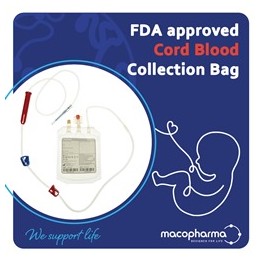Jesteś tutaj
The Quest to Diagnose Autism With Biomarkers
Behavioral Scoring to Diagnose Autism
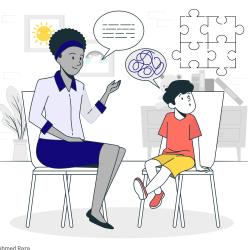 If you Google the question, “How to diagnose Autism?”, the top web pages on the subject all say that there is no medical test, like a blood test or image, to diagnose autism spectrum disorder (ASD). "Doctors look at the child’s developmental history and behavior to make a diagnosis"1. The triad of behaviors that typically contribute to an autism diagnosis are: deficits in social interactions, deficits in communication, and activities or interests that are rigid or repetitive2,3. When a young child has non-verbal autism it is often obvious, but it is easy for a person on the high functioning end of the autism spectrum to go many years without a diagnosis unless a trained person looks at the overall pattern of their behaviors. It is frequently said that ASD is one of the most heterogeneous neurodevelopmental disorders. There is a famous saying for this diagnosis, "If you’ve met one individual with autism, you’ve met one individual with autism,” because each person on the spectrum presents differently4.
If you Google the question, “How to diagnose Autism?”, the top web pages on the subject all say that there is no medical test, like a blood test or image, to diagnose autism spectrum disorder (ASD). "Doctors look at the child’s developmental history and behavior to make a diagnosis"1. The triad of behaviors that typically contribute to an autism diagnosis are: deficits in social interactions, deficits in communication, and activities or interests that are rigid or repetitive2,3. When a young child has non-verbal autism it is often obvious, but it is easy for a person on the high functioning end of the autism spectrum to go many years without a diagnosis unless a trained person looks at the overall pattern of their behaviors. It is frequently said that ASD is one of the most heterogeneous neurodevelopmental disorders. There is a famous saying for this diagnosis, "If you’ve met one individual with autism, you’ve met one individual with autism,” because each person on the spectrum presents differently4.
Given the complexity of autism, professionals that are tasked with testing children for this condition have developed quite a few behavioral scoring systems to determine if a child satisfies the current diagnostic criteria for autism. The various scoring systems have relative strengths and weaknesses depending on whether the checklist is being filled out by a psychologist, a teacher, or a parent. The list below names some of the most well-known behavioral scoring systems for autism in alphabetic order (this list is not comprehensive):
- Autism Behavior Checklist (ABC)
- Autism Diagnostic Interview-Review (ADI-R)
- Autism Diagnostic Observation Schedule (ADOS)
- Autism Symptoms Dimensions Questionnaire (ASDQ)
- Autism Treatment Evaluation Checklist (ATEC)
- Childhood Autism Rating Scale (CARS)
- Connors Comprehensive Behavioral Rating Scale (CBRS)
- Diagnostic Interview for Social Communication Disorders (DISCO)
- Vineland Adaptive Behavior Scale (VABS)
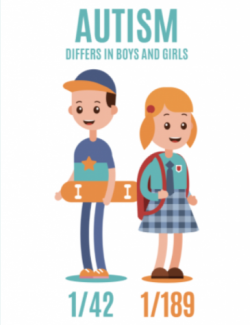 The behavioral test that is most frequently called the “gold standard” for diagnosing autism is ADOS. However, ADOS is not super accurate. A meta-analysis which compared seven studies covering over four thousand children found that overall ADOS had a 52% diagnostic accuracy and 73% specificity5. Diagnostic accuracy is the ability of a test to correctly determine the presence or absence of a diagnosis, whereas diagnostic specificity is the ability to confidently exclude people who do not have the diagnosis. In other words, a test with a high specificity score avoids giving patients diagnoses that are false positives. The good news is that ADOS has excellent “reliability”, meaning that repeat tests of the same child yield the same scores6.
The behavioral test that is most frequently called the “gold standard” for diagnosing autism is ADOS. However, ADOS is not super accurate. A meta-analysis which compared seven studies covering over four thousand children found that overall ADOS had a 52% diagnostic accuracy and 73% specificity5. Diagnostic accuracy is the ability of a test to correctly determine the presence or absence of a diagnosis, whereas diagnostic specificity is the ability to confidently exclude people who do not have the diagnosis. In other words, a test with a high specificity score avoids giving patients diagnoses that are false positives. The good news is that ADOS has excellent “reliability”, meaning that repeat tests of the same child yield the same scores6.
In the United States, parents that are seeking an accurate test for autism may schedule their child for a neuropsychological evaluation performed by a trained psychologist7. This evaluation requires hours of testing, which may be spread over days, and it costs thousands of dollars if it is not covered by insurance or by the child’s school. Psychologists who perform these tests may combine different scoring systems, including the ones named above as well as others. Having an autism diagnosis from neuro-psych testing will unlock many doors for families in the US. Most importantly, under the federal law, Individuals with Disabilities Education Act (IDEA), public schools must provide personalized assistance to children diagnosed with autism in the form of an Individualized Education Plan (IEP)8. These plans expire at the end of high school, but having a neuro-psych report also enables a young adult with autism to continue to get accommodations at most US colleges.
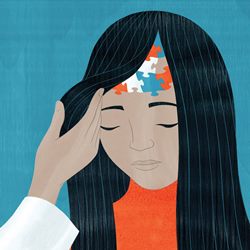 Parents that are seeking an intervention for their child’s autism need to be aware that each study of an intervention always measures the outcome against a behavioral score, but different studies are testing their outcomes against different scores! One group of researchers looked at 406 clinical trials of autism interventions and found that they were measuring outcomes on 327 different scores9. “The fragmentation of tools may significantly hamper the comparisons between studies and thus the discovery of effective treatments for autism spectrum disorder”9. A specific example would be stem cell therapy as an intervention for autism. At Duke University, all studies of stem cell therapy for autism consistently use the VABS scoring system, and they have seen significant improvements in the sub-group of children ages 4 to 7 with higher IQ10. Meanwhile, other researchers use other scores. In 2021, a group of researchers in México published a meta-analysis of 11 clinical trials of stem cell therapy for autism that held 461 patients. They found that the pooled results were statistically significant on the ABC scale and the CARS scale, but not on the VABS scale11. But in 2022 a group of researchers in China reached the opposite conclusion. They restricted their meta-analysis to only 5 random-controlled-trials of stem cell therapy for autism holding 325 subjects and found that the CARS results were significantly worse than the control group12. They warned that “It is urgent to establish a standardized treatment protocol through a large number of trials”12.
Parents that are seeking an intervention for their child’s autism need to be aware that each study of an intervention always measures the outcome against a behavioral score, but different studies are testing their outcomes against different scores! One group of researchers looked at 406 clinical trials of autism interventions and found that they were measuring outcomes on 327 different scores9. “The fragmentation of tools may significantly hamper the comparisons between studies and thus the discovery of effective treatments for autism spectrum disorder”9. A specific example would be stem cell therapy as an intervention for autism. At Duke University, all studies of stem cell therapy for autism consistently use the VABS scoring system, and they have seen significant improvements in the sub-group of children ages 4 to 7 with higher IQ10. Meanwhile, other researchers use other scores. In 2021, a group of researchers in México published a meta-analysis of 11 clinical trials of stem cell therapy for autism that held 461 patients. They found that the pooled results were statistically significant on the ABC scale and the CARS scale, but not on the VABS scale11. But in 2022 a group of researchers in China reached the opposite conclusion. They restricted their meta-analysis to only 5 random-controlled-trials of stem cell therapy for autism holding 325 subjects and found that the CARS results were significantly worse than the control group12. They warned that “It is urgent to establish a standardized treatment protocol through a large number of trials”12.
Biomarker Testing to Diagnose Autism
A diagnostic biomarker is any type of medical test, such as a blood test or an image, which can be used to diagnose or help diagnose a complex medical condition. A big advantage of biomarkers is that they are objective scientific measurements, whereas in-person assessments are more subjective and can be thrown off by language or cultural incompatibilities between the tester and the subject5. A good biomarker would increase the speed and lower the cost of getting an accurate autism diagnosis. It would also enable earlier diagnosis and intervention for children with autism.
 There is an enormous amount of research on diagnostic biomarkers for autism, literally many hundreds of research papers have been published on this subject. In the United States, the FDA has a specific process to approve a biomarker for routine clinical use13. The FDA instructions state, “biomarker qualification involves a three-stages submission process to develop a biomarker for regulatory use” … “Multiple interested parties often work together in working groups or consortia to develop a biomarker for qualification.” But the FDA does not have a formal minimum accuracy that the biomarker must achieve to be approved14. However, the American Psychiatric Association (APA) does have a minimum threshold; the consensus reports of their working group on biomarkers for psychiatric disorders have repeatedly recommended that a biomarker must have at least two well-powered studies which provide evidence that accuracy and specificity are both over 80%15. On top of the many papers about individual biomarkers, there have been a number of papers which perform a review or meta-analysis of biomarkers, and a few of these are described below.
There is an enormous amount of research on diagnostic biomarkers for autism, literally many hundreds of research papers have been published on this subject. In the United States, the FDA has a specific process to approve a biomarker for routine clinical use13. The FDA instructions state, “biomarker qualification involves a three-stages submission process to develop a biomarker for regulatory use” … “Multiple interested parties often work together in working groups or consortia to develop a biomarker for qualification.” But the FDA does not have a formal minimum accuracy that the biomarker must achieve to be approved14. However, the American Psychiatric Association (APA) does have a minimum threshold; the consensus reports of their working group on biomarkers for psychiatric disorders have repeatedly recommended that a biomarker must have at least two well-powered studies which provide evidence that accuracy and specificity are both over 80%15. On top of the many papers about individual biomarkers, there have been a number of papers which perform a review or meta-analysis of biomarkers, and a few of these are described below.
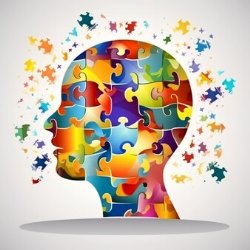 Two comprehensive papers came out in 2023 which both concluded that there are no biomarkers for ASD which meet the APA level of evidence16,17. Cortese et al. looked at 780 studies covering all neurodevelopmental disorders and asked if any proposed biomarker was supported by two or more independent studies which yielded both accuracy and specificity of at least 80%, plus there were no contradicting studies with lower results16. Notice that this rating system requires that the results for a biomarker have to be consistently good. They included 300 studies of ASD which held 20,583 participants and 33,450 controls, and evaluated 1,298 biomarkers, and yet they could not find consistently good results for any ASD biomarker16. Similarly, Parellada et al. looked at 280 studies of ASD that evaluated 940 biomarkers17. They found 12 biomarkers that performed well in more than one study, listed in their Table 1. But their in-depth review then found that all of these “biomarkers assessed multiple times mostly reveal both inconsistent evidence of ASD association and variable direction of effect… These discrepancies suggest a replication crisis”17. Also, the studies of biomarkers in their Table 1 relied on multiple different behavioral scores for comparison.
Two comprehensive papers came out in 2023 which both concluded that there are no biomarkers for ASD which meet the APA level of evidence16,17. Cortese et al. looked at 780 studies covering all neurodevelopmental disorders and asked if any proposed biomarker was supported by two or more independent studies which yielded both accuracy and specificity of at least 80%, plus there were no contradicting studies with lower results16. Notice that this rating system requires that the results for a biomarker have to be consistently good. They included 300 studies of ASD which held 20,583 participants and 33,450 controls, and evaluated 1,298 biomarkers, and yet they could not find consistently good results for any ASD biomarker16. Similarly, Parellada et al. looked at 280 studies of ASD that evaluated 940 biomarkers17. They found 12 biomarkers that performed well in more than one study, listed in their Table 1. But their in-depth review then found that all of these “biomarkers assessed multiple times mostly reveal both inconsistent evidence of ASD association and variable direction of effect… These discrepancies suggest a replication crisis”17. Also, the studies of biomarkers in their Table 1 relied on multiple different behavioral scores for comparison.
By comparison, a 2019 meta-analysis of groups of autism biomarkers yielded encouraging results18. The methodology of this study was completely different from the papers in the previous paragraph. These authors looked at 866 studies of diagnostic biomarkers for ASD and selected 71 high quality papers for analysis18. They divided the biomarkers into five categories, and within each category they performed a meta-analysis of the pooled results. In a meta-analysis, you basically average the scores from all the studies, without excluding any study because the result is below 80%, and each study is weighted by the number of participants. The table below summarizes their findings. “Taken together, all analyzed modalities provided for higher diagnostic accuracy and specificity compared to the gold-standard ADOS test”18.
ASD Biomarker Category | # studies | Pooled sensitivity (%) | Pooled specificity (%) |
Genetic | 14 | 79.3 | 73.1 |
MRI | 22 | 73.6 | 73.0 |
Metabolic | 21 | 74.6 | 85.9 |
Protein | 12 | 85.5 | 84.7 |
EEG | 6 | 79.9 | 80.4 |
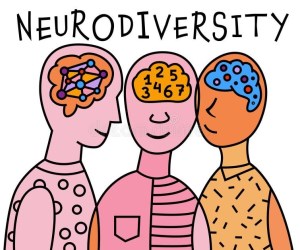 The future of autism biomarkers may lie in developing panels of tests that have greater combined accuracy than any single test. For example, a study which tested children’s blood samples for over one thousand markers of inflammation and autoimmune reactions found a panel of a dozen markers which have a diagnostic accuracy of 82%19.
The future of autism biomarkers may lie in developing panels of tests that have greater combined accuracy than any single test. For example, a study which tested children’s blood samples for over one thousand markers of inflammation and autoimmune reactions found a panel of a dozen markers which have a diagnostic accuracy of 82%19.
In summary, to date there are no diagnostic biomarkers for autism that have been officially approved by the FDA as a substitute or even an adjunct to the traditional autism diagnosis via behavioral evaluations. This is why all the websites that come up in Google search tell parents that there are no biomarkers for ASD. There are many tested biomarkers, but there are no officially approved biomarkers. The primary challenge of establishing an autism biomarker is that it would have to be validated against a traditional behavioral test. Secondly, in order to be accepted by the psychiatric community the proposed biomarker must consistently yield high scores in multiple independent studies. Despite these challenges, some biomarkers do show promise, and panels of tests that combine biomarkers are especially promising. We are hopeful that the next decade will see big progress in this field.
Research on NSE as a Biomarker
It is well-established that autism correlates with inflammation. Researchers have found that children with ASD have higher levels of markers for systemic inflammation, such as the pro- inflammatory cytokines IL-1β, IL-6, IL-8, TNF-α, the macrophage chemoattractant protein (MCP-1), and transforming growth factor (TGF–β1)20-22. It has also been shown that children with ASD have higher levels of markers for neuroinflammation and glial M1 activation in the Central Nervous System (CNS)23-26.
The research program at Bio-Forum Foundation has been exploring neuron-specific enolase (NSE) as a biomarker for autism. NSE is a metabolic enzyme which localizes to neurons and neuroendocrine cells. We recruited 56 children diagnosed with autism for the CORDUS clinical trial in Romania where they received their own (autologous) cord blood as an intervention. We discovered that NSE was significantly elevated in over 95% of our trial participants27. Prior to treatment, their average blood plasma value of NSE was 24.0 +/- 10.4 ng/mL, whereas the normal range is below 16.3 ng/mL27. This was the first time that neuronal destruction was documented in ASD children besides post-mortem studies. The children’s parents were somewhat alarmed by this finding, because elevated NSE values are associated with cancers such as neuroblastoma and small cell lung carcinoma. But elevated NSE is also associated with episodes of infection, and this strengthens the argument that inflammation and neuronal destruction in the central nervous system may be associated with ASD.
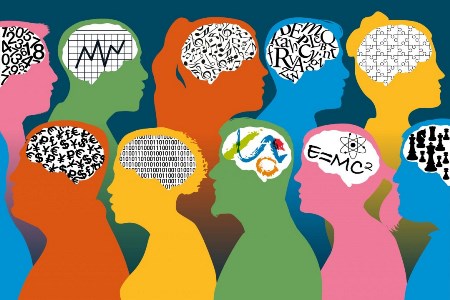 The CORDUS (NCT04007224) clinical trial had a cross-over design in which all children received their own cord blood, either initially or at the second visit two months later. Only half the children met the study inclusion criteria of ages from 3 to 7 and weight below 30 kg, the other half of the children were older or bigger and received cord blood therapy as compassionate treatment. Following the cord blood therapy, 79% of the children in the young study group showed statistically significant improvements in tests of verbalization and social interaction, whereas in the older group only 10% had improved scores28. Parent observations among the children ages 3 to 7 covered a wide range, from some who felt the treatment was transformative to some who felt they saw no change28.
The CORDUS (NCT04007224) clinical trial had a cross-over design in which all children received their own cord blood, either initially or at the second visit two months later. Only half the children met the study inclusion criteria of ages from 3 to 7 and weight below 30 kg, the other half of the children were older or bigger and received cord blood therapy as compassionate treatment. Following the cord blood therapy, 79% of the children in the young study group showed statistically significant improvements in tests of verbalization and social interaction, whereas in the older group only 10% had improved scores28. Parent observations among the children ages 3 to 7 covered a wide range, from some who felt the treatment was transformative to some who felt they saw no change28.
After the cord blood treatment in the CORDUS clinical trial, NSE levels decreased in some, but not all, of the children in the study. There was no correlation between follow-up NSE levels and psychometric improvements following therapy28. Based on the results so far, NSE can only be used as a diagnostic biomarker for ASD, but not as a measure of therapy response.
Hopes for the future
Bio-Forum Foundation plans to run more trials of cord blood and perinatal cells as intervention for ASD. We want to find a way to predict, with reasonable accuracy, the children in whom the cord blood is most likely to be beneficial. We feel there are two variables in this process that should be explored. One is the initial status of the child, and the other is the properties of the cord blood unit. In addition to testing the enrolling children for inflammatory cytokines, we plan to add microRNA profiling of both the stored cord blood and the child’s current blood before the study begins. We also want to have a more detailed profile of the cell types in each cord blood unit.
For the benefit of society as a whole, it is important to raise awareness among parents and health care providers that studies like the CORDUS trial are only possible when children have their own cord blood in storage. We wish that education about cord blood stem cells was always included during prenatal visits for expectant mothers. And of course, our biggest hope is that sooner rather than later we will be able to help children living with low functioning ASD.
About the authors
 Frances Verter, PhD, is the founder of Parent’s Guide to Cord Blood Foundation. Dr. Verter has spent her entire life around people on the autism spectrum. She grew up with an older brother who had Asperger's syndrome, but the family did not know the name for it or how to manage it. In her early career she worked in physics research, which is a field of science that attracts a lot of people who are on the spectrum. She is now the mother of a young adult who has high functioning autism. The study of stem cells as a treatment for autism intrigues her; while the outcomes of clinical trials have been weak, some individual patients have had dramatic responses. She is very curious to see where this field will go, with improved clinical trials that are designed to target the patients most likely to benefit from the treatment.
Frances Verter, PhD, is the founder of Parent’s Guide to Cord Blood Foundation. Dr. Verter has spent her entire life around people on the autism spectrum. She grew up with an older brother who had Asperger's syndrome, but the family did not know the name for it or how to manage it. In her early career she worked in physics research, which is a field of science that attracts a lot of people who are on the spectrum. She is now the mother of a young adult who has high functioning autism. The study of stem cells as a treatment for autism intrigues her; while the outcomes of clinical trials have been weak, some individual patients have had dramatic responses. She is very curious to see where this field will go, with improved clinical trials that are designed to target the patients most likely to benefit from the treatment.
 Felician Stăncioiu, MD, is Romanian by birth, but worked in the United States between 1995 and 2006, both in clinical practice with under-served populations and in research areas including stem cell processing. He returned to Romania in 2007 and since 2012 he is the medical director of Bio-Forum Foundation. Dr. Stăncioiu's passion is medical research. He has designed and executed five clinical trials and holds two patents on topical natural extracts. His research interests include Cushing's syndrome, Diabetes, the efficacy of herbal medicine, and the ability of stem cell therapy to benefit neurologic conditions. Between 2019 and 2023 he conducted the CORDUS clinical trial which treated autistic spectrum disorder with autologous cord blood delivered intravenously. He is currently preparing a follow up clinical trial, titled HEMMES, which builds on the results from the CORDUS study.
Felician Stăncioiu, MD, is Romanian by birth, but worked in the United States between 1995 and 2006, both in clinical practice with under-served populations and in research areas including stem cell processing. He returned to Romania in 2007 and since 2012 he is the medical director of Bio-Forum Foundation. Dr. Stăncioiu's passion is medical research. He has designed and executed five clinical trials and holds two patents on topical natural extracts. His research interests include Cushing's syndrome, Diabetes, the efficacy of herbal medicine, and the ability of stem cell therapy to benefit neurologic conditions. Between 2019 and 2023 he conducted the CORDUS clinical trial which treated autistic spectrum disorder with autologous cord blood delivered intravenously. He is currently preparing a follow up clinical trial, titled HEMMES, which builds on the results from the CORDUS study.
References
- Centers for Disease Control and Prevention. Screening and Diagnosis of Autism Spectrum Disorder. CDC web. Last reviewed 2022-03-31
- American Psychiatric Association. Diagnostic and statistical manual of mental disorders. (DSM-5-TR) Published 2022
- Smith IC, Reichow B, Volkmar FR. The Effects of DSM-5 Criteria on Number of Individuals Diagnosed with Autism Spectrum Disorder: A Systematic Review. J Autism and Developmental Disorders. 2015; 45:2541–2552.
- Magro K. Autism is one word attempting to describe millions of different stories. Autism Speaks. Accessed 2024-04-03
- Tsheringla S, Minju KA, Russell S, Mammen P, Russell PS, Nair MK. A meta-analysis of the diagnostic accuracy of Autism Diagnostic Observation Schedule Module-1 for autism spectrum disorders. Indian J Pediatrics. 2014;81(Suppl 2):S187–92. doi: 10.1007/s12098-014-1627-9
- Frazier TW, Whitehouse AJO, Leekam SR, Carrington SJ, Alvares GA, Evans DW, Hardan AY, Uljarević M. Reliability of the Commonly Used and Newly-Developed Autism Measures. J Autism and Developmental Disorders. 2023; ePub
- American Psychological Association (APA). Neuropsychological Testing. CPT Codes. Last updated 2018
- U.S. Department of Education. Individuals with Disabilities Education Act (IDEA) Last updated 2004.
- Provenzani U, Fusar-Poli L, Brondino N, Damiani S, Vercesi M, Meyer N, Rocchetti M, Politi P. What are we targeting when we treat autism spectrum disorder? A systematic review of 406 clinical trials. Autism. 2020; 24(2):274-284.
- Kurtzberg J. Results from the Duke ACT Study of Cord Blood for Autism: The Inside Scoop from Dr. Kurtzberg. Parent's Guide to Cord Blood Foundation Newsletter Published 2020-07
- Villarreal-Martínez L, González-Martínez G, Sáenz-Flores M, Bautista-Gómez AJ, González-Martínez A, Ortiz-Castillo M, Robles-Sáenz DA, Garza-López E. Stem Cell Therapy in the Treatment of Patients With Autism Spectrum Disorder: a Systematic Review and Meta-analysis. Stem Cell Rev Rep. 2022; 18(1):155-164.
- Qu J, Liu Z, Li L, Zou Z, He Z, Zhou L, Luo Y, Zhang M, Ye J. Efficacy and Safety of Stem Cell Therapy in Children With Autism Spectrum Disorders: A Systematic Review and Meta-Analysis. Frontiers Pediatrics. 2022; 10:897398.
- U.S. Food and Drug Administration. More About Biomarkers & Qualification. Last updated 2021-07-07
- Darrow JJ. Pharmaceutical Efficacy: The Illusory Legal Standard, Wash. & Lee Law Review 2013; 70(4):2073-2136.
- First M, Botteron K, Carter C, Castellanos FX, Dickstein DP, Drevets W, et al. Consensus Report of the APA Work Group on Neuroimaging Markers of Psychiatric Disorders. American Psychiatric Association (APA) Action paper. Published 2012
- Cortese S, Solmi M, Michelini G, Bellato A, Blanner C, Canozzi A, et al. Candidate diagnostic biomarkers for neurodevelopmental disorders in children and adolescents: a systematic review. World Psychiatry, 2023; 22(1):129-149.
- Parellada M, Andreu-Bernabeu A, Burdeus M, Cáceres ASJ, Urbiola E, Carpenter, et al. In Search of Biomarkers to Guide Interventions in Autism Spectrum Disorder: A Systematic Review. American Journal of Psychiatry, 2023; 180(1):23-40.
- Ansel A, Posen Y, Ellis R, Deutsch L, Zisman PD, Gesundheit B. Biomarkers for Autism Spectrum Disorders (ASD): A Meta-analysis. Rambam Maimonides Medical Journal 2019; 10(4):e0021.
- Gesundheit B, Zisman PD, Hochbaum L, Posen Y, Steinberg A, Friedman G, Ravkin HD, Rubin E, Faktor O, Ellis R. Autism spectrum disorder diagnosis using a new panel of immune- and inflammatory-related serum biomarkers: A case-control multicenter study. Frontiers Pediatrics. 2023; 11:967954.
- Molloy CA, Morrow AL, Meinzen-Derr J, Schleifer K, Dienger K, Manning-Courtney P, Altaye M, Wills-Karp M. Elevated cytokine levels in children with autism spectrum disorder. J Neuroimmunology. 2006; 172(1-2):198–205.
- Gesundheit B, Rosenzweig JP, Naor D, Lerer B, Zachor DA, Prochazka V, et al. Immunological and autoimmune considerations of Autism Spectrum Disorders. J Autoimmunity. 2013; 44:1-7.
- Hughes HK, Moreno RJ, Ashwood P. Innate immune dysfunction and neuroinflammation in autism spectrum disorder (ASD). Brain, Behavior, Immunity. 2023; 108:245-254.
- Laurence JA, Fatemi SH. Glial fibrillary acidic protein is elevated in superior frontal, parietal and cerebellar cortices of autistic subjects. The Cerebellum. 2005; 4(3):206-210.
- Malik M, Tauqeer Z, Sheikh AM, Wen G, Nagori A, Yang K, Brown WT, Li X. NF-κB Signaling in the Brain of Autistic Subjects. Mediators Inflammation. 2011; 2011:785265. (Erratum in: Mediators Inflammation. 2013; 2013:691975.)
- Yang Z, Wang KKW. Glial fibrillary acidic protein: from intermediate filament assembly and gliosis to neurobiomarker. Trends Neuroscience. 2015; 38(6):364-374.
- Vakilzadeh G, Martinez-Cerdeño V. Pathology and Astrocytes in Autism. Neuropsychiatric Disease Treat. 2023; 19:841-850.
- Stancioiu F, Bogdan R, Dumitrescu R. Neuron-Specific Enolase (NSE) as a Biomarker for Autistic Spectrum Disease (ASD). Life. 2023; 13, 1736.
- Stancioiu F, Dumitrescu R, Bogdan R, Ivanescu B. Autologous Cord Blood vs Individualized Supplements in Autistic Spectrum Disease – Results of the CORDUS Study. PrePrints.org 2024; ePub

